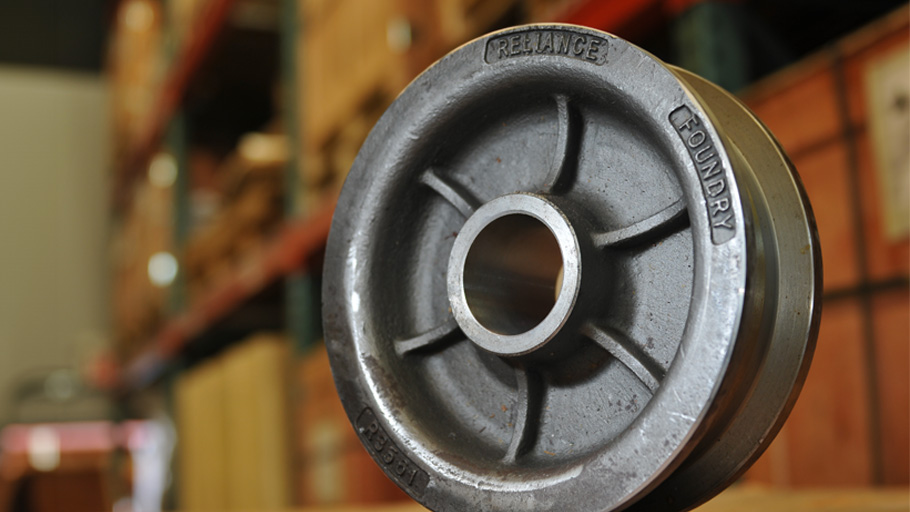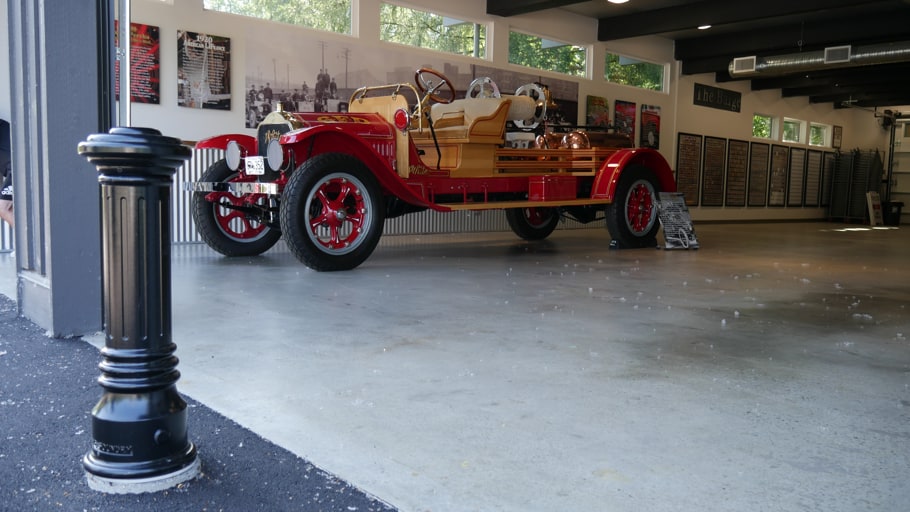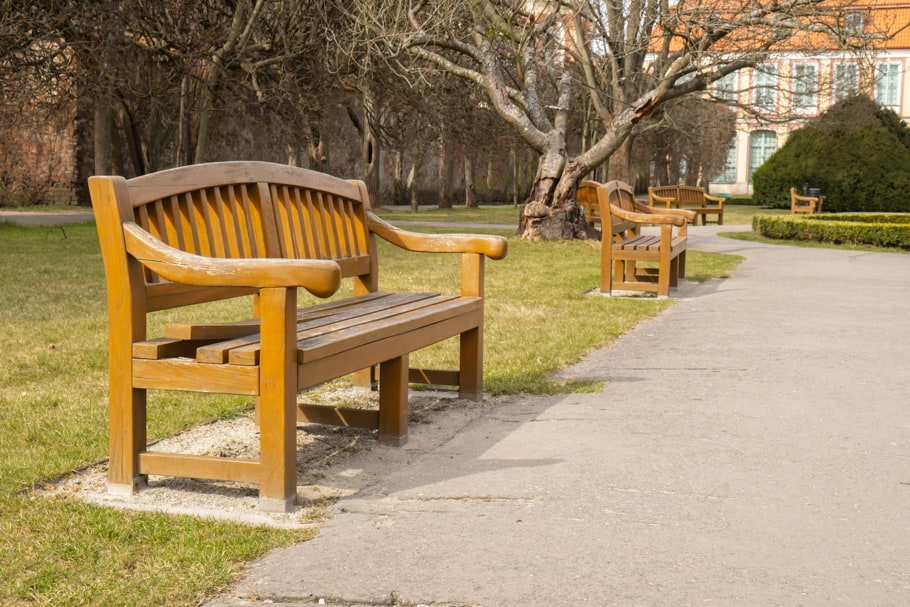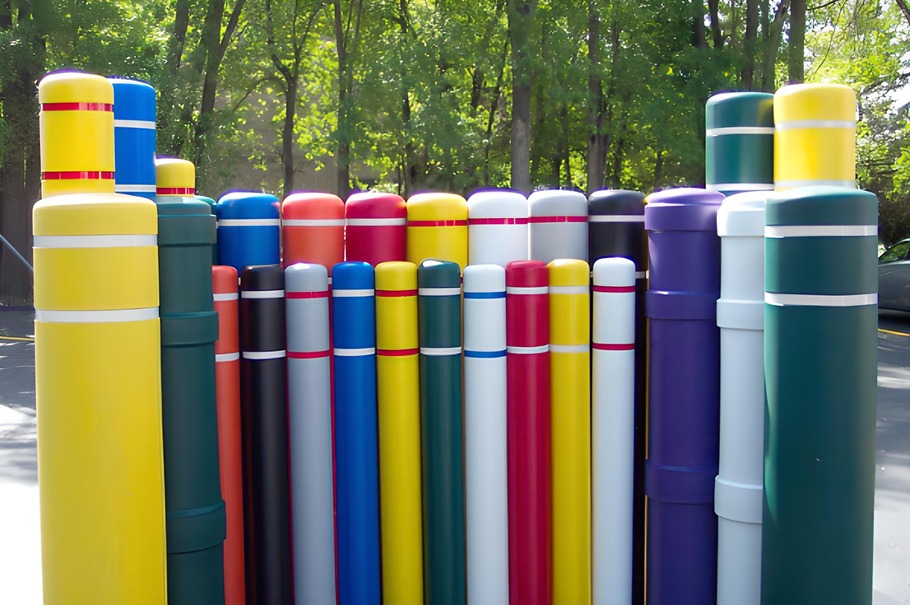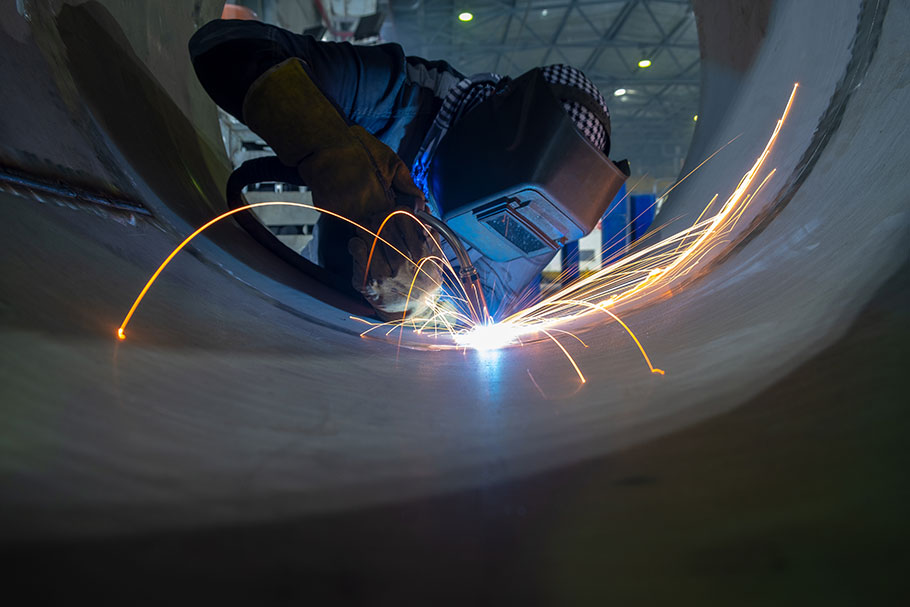Polyurethane often doesn’t seem like plastic. What is it & how is it produced?

Polyurethane is a polymer joined by urethane links. These links are formed by reacting a di- or poly-isocyanate with a polyol. Polyurethane is unique in that it is not manufactured like many other plastics. Most polymers, such as polyethylene, are produced in the form of a powder and then molded into a desired form. Contrastingly, polyurethanes are typically formed directly into the final product.
What is polyurethane plastic used for?
Polyurethane is the base component for various commercial applications and building materials. It can also be found in apparel, sporting goods, and traffic management devices.

Plastic parts
Polyurethane plastic can be rigid or flexible. Rigid polyurethane is used in structural parts for industrial and commercial applications. It is also used for surfboard and boat components, as well as electronic instrument bezels. Flexible polyurethane is a common material for creating grips in sporting equipment, such as golf clubs and tennis rackets.
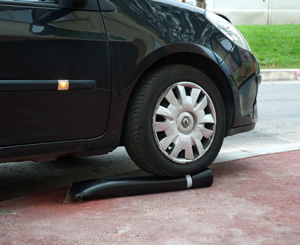
Flexible bollards
Polyurethane flexible bollards offer traffic management solutions in parking lots and city streets. Low-impact bollards are durable and cost-effective, used as bike lane delineators or to mark the end of a parking stall. For areas with changing traffic needs, a removable flexible bollard allows for varied configurations.

Fabric
Polyurethane can be converted into fibers using a dry spinning technique. These fibers are widely used in fabric for apparel from sportswear to hosiery. Chemically, the fabric, known as Spandex, Lycra, or elastane, is comprised of at least 85% polyurethane.

Wheels
Polyurethane has a high load-bearing capacity and is the base material for elastomeric wheels and tires. These can be found on shopping carts, elevators, roller coasters, and roller skates.
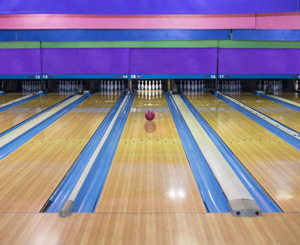
Floorings and infrastructure
Polyurethane coatings are ideal for surfaces that require abrasion and corrosion resistance, such as hardwood floors and outdoor infrastructure. Through regular maintenance, these surfaces can be protected from daily wear and tear.

Foams and cushions
Flexible foams are soft with high absorption characteristics. Semi-flexible polyurethane foams are firmer and used for car dashboards and door liners. High-resilience foam products are suitable for foam seating, seals, and insulation panels.
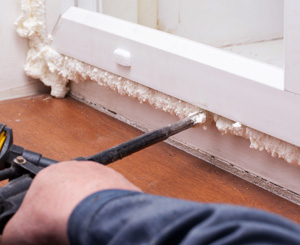
Adhesives and sealants
Polyurethane is used in high-performance adhesives and surface sealants. These sealants fill gaps while allowing for expansion and contraction in building materials. The elastomeric properties of the sealant allow for 25–50% movement. Foam sprays are also developed from polyurethane and fill up crevices for better building insulation.
Polyurethane properties
The polymer densities of polyurethane can be controlled, resulting in a range of properties. Polyurethane benefits include high elasticity and moldability, making it an ideal base material for many plastic products, as seen above.
POLYURETHANE PROPERTIES
ADVANTAGES
DISADVANTAGES
High abrasion and solvent resistance
Low thermal capability
High load bearing capacity and elasticity
Toxic properties (Isocyanates)
High insulation
Low tolerance to sunlight
Good molding quality
Flammable
Polyurethane structure and production
Polyurethane is produced by the exothermic reaction between two molecules, isocyanates and polyols, that create a urethane linkage. It is important to first understand isocyanates and polyols as polyurethane is a result of these two compounds.
1) Isocyanates
Isocyanate has the formula R–N=C=O. It is an organic compound that is reactive, and often contains polymeric materials. When an isocyanate has two isocyanate groups, it is referred to as a di-isocyanate (TDI). TDI is used to react with polyols in the production of polyurethane.
2) Polyols
Polyols can be either polyether or polyester polyols. Polyether polyols are made when epoxides react with an active hydrogen containing compounds. Polycondensation occurs between the multifunctional carboxylic acids and polyhydroxy compounds. Polyols with a higher molecular weight result in flexible polyurethanes. Lower molecular weight polyols produce rigid polyurethanes.
3) Polyurethane
The type of isocyanate and polyol used in polyurethane production influences its properties. Polyols are responsible for controlling the flexibility and elasticity of the polymer. Longer chains and low crosslinking create a stretchy polymer, while shorter chains result in a harder polymer. There are many choices available for isocyanates and polyols, and a variety of processing conditions are used for production.
Additives are also involved in the polyurethane manufacturing process. These chemicals control polyurethane-forming reactions and properties.
ADDITIVES USED IN POLYURETHANE PRODUCTION
Catalysts
Speeds up chemical reaction
Cross-linking agents
Mechanical reinforcement
Flame retardants
Reduces flammability
Plasticizers
Reduces hardness
Fillers
Improves material properties and reduces costs
Blowing agents surfactants
Controls cell structure of foam polyurethane
Smoke suppressants
Reduces the level of smoke when burnt
Pigments
Adds color for aesthetics
Classifications of polyurethane
Polyurethane can be classified into two groups based on their reactions to heat:
Thermoplastic
Thermoplastic polyurethane is versatile in that it can be re-heated and remolded numerous times. When heated, it turns to liquid and can be molded into the desired shape without any changes to the plastic’s properties. Thermoplastic polyurethane is best suited for end-products that require heat tolerances of over 250°F.
Thermoset
Thermoset polyurethane cannot be formed more than once. When thermoset polyurethane hardens, it experiences a chemical reaction, making the change permanent. Thermoset polyurethane is the more durable option for weight-bearing and abrasion resistant products.
Types of polyurethane
Polyurethane can be categorized into four main types: elastomers, coatings, flexible foams, and cross-linked foams. For each of the types, the most suitable class of polyurethane should be chosen—either thermoplastic or thermoset. Depending on the specific design and application, different requirements for heat, weight, and abrasion must be considered.
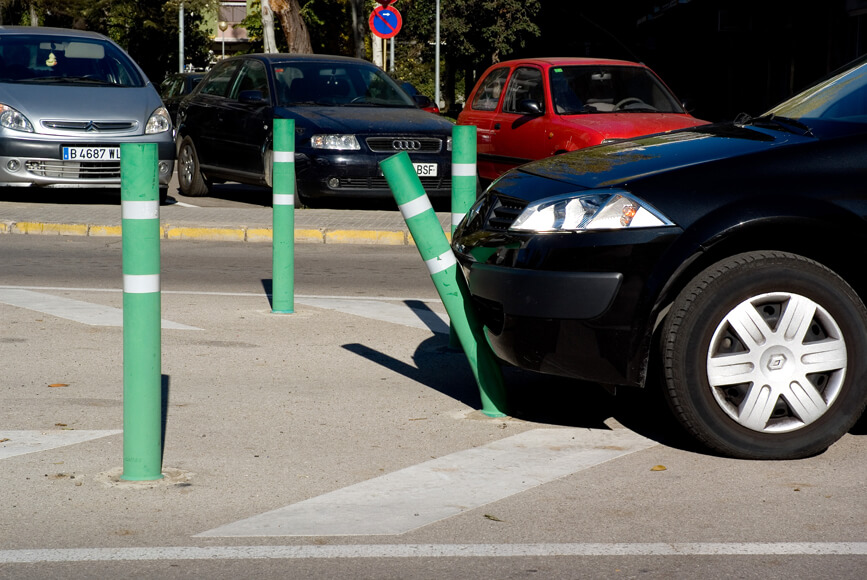
Elastomers
Polyurethane elastomers have very high elasticity. Traffic safety devices, such as flexible bollards, benefit from these elastic properties. Designed to bend under vehicles, flexible bollards can quickly return to their original form after being flattened.
Coatings
Polyurethane coatings provide resistance from harsh solvents such as industrial cleaners. They also offer some protection against impact. Polyurethane coatings are ideal for surfaces that need abrasion resistance. Water-based solutions are also available.
Flexible foams
Flexible foams have high impact strength and cushioning. Semi-flexible polyurethane foams are also available as firmer alternatives.
Cross-linked foams
Cross-linked foams offer a more rigid and thicker structure compared to flexible foams.
Polyurethane plastic maintenance
Polyurethane is easy to take care for and low maintenance. It is resistant to solvents, oils, and corrosion—and highly durable against weathering and abrasion. Regular maintenance is as simple as wiping down the surface with a damp cloth. For instances with more surface damage, detergents and cleaning agents may be used. However, it is best to save the harsh cleansers for occasional use as they can affect the gloss level of some polyurethane finishes.
Polyurethane plastic recycling
Polyurethane can be recycled in two ways: mechanical or chemical recycling. Mechanical recycling reuses the material in its polymer form, while chemical recycling takes the material back to its chemical components.
1) Mechanical recycling
Rebond
Polyurethane waste is chopped into small pieces, sprayed with a prepolymer, and bound to the desired grade of foam. A popular method for recycled carpet underlays.
Regrind
Polyurethane industrial trim is grinded into a fine powder. The powder can then be combined with virgin materials to produce new polyurethane foam.
Adhesive pressing
Polyurethane parts are granulated and blended, then put under heat and pressure to form boards or moldings. The resulting particleboards can be used in sound proofing products and furniture applications.
2) Chemical recycling
Glycolysis
Industrial and post-consumer polyurethanes are mixed with diols at high heat. New polyols are created through a chemical reaction, which can then be used to make recycled polyurethane.
Hydrolysis
A reaction between used polyurethanes and water results in polyols that can be used as fuel. The intermediate chemicals can be used as raw materials to create recycled polyurethane.
Pyrolysis
Gas and oil are created by breaking down polyurethanes in an environment that is free of oxygen.
Hydrogenation
Gas and oil are created from used polyurethanes through applying heat, pressure, and oxygen.
The future of polyurethane
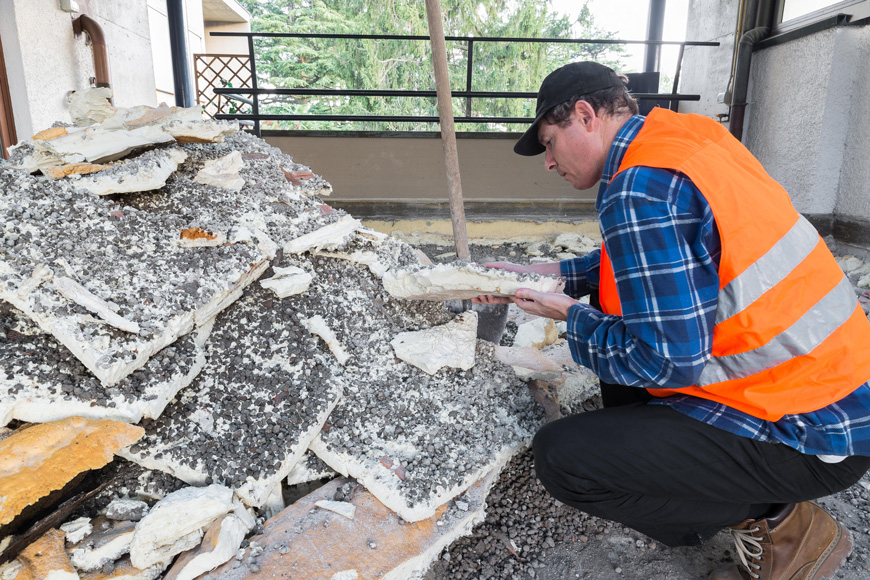
Polyurethane is an impressive resource with its combination of workable characteristics. Polyurethane products also boast variety—ranging from plastics, foams, coatings, to sealants—that benefit a multitude of industries.
Polyurethane products have a cyclical life span as they continue to hold value even after reaching the end of their product life cycle. In 2010, American automobile manufacturer, Chrysler, announced that it would use 180,000 pounds of recycled polyurethane foams for their seats and headrests. As the world goes green, the polyurethane industry follows suit with sustainable practices.



